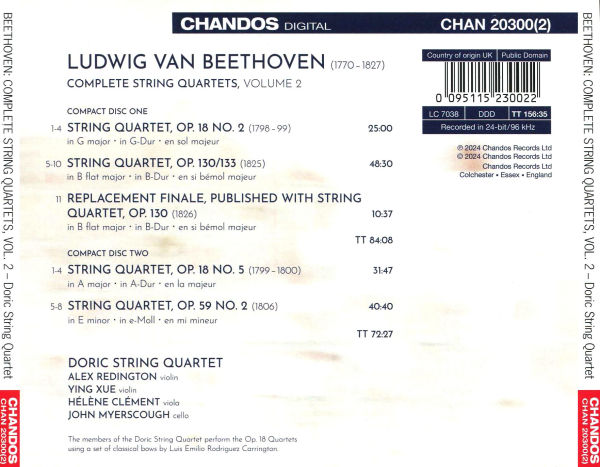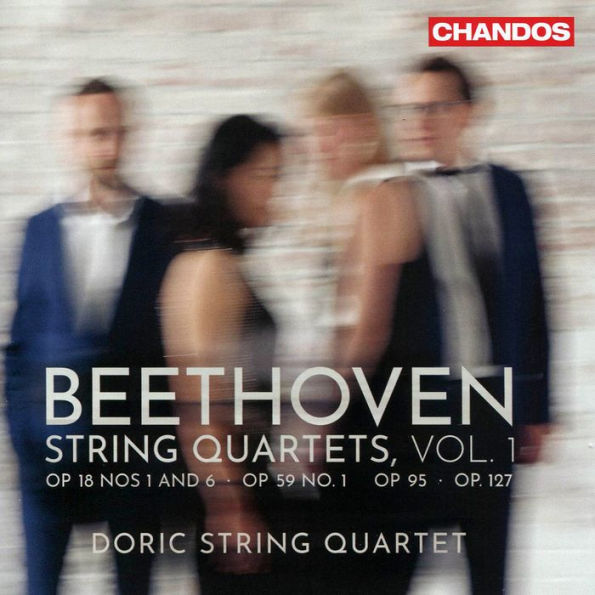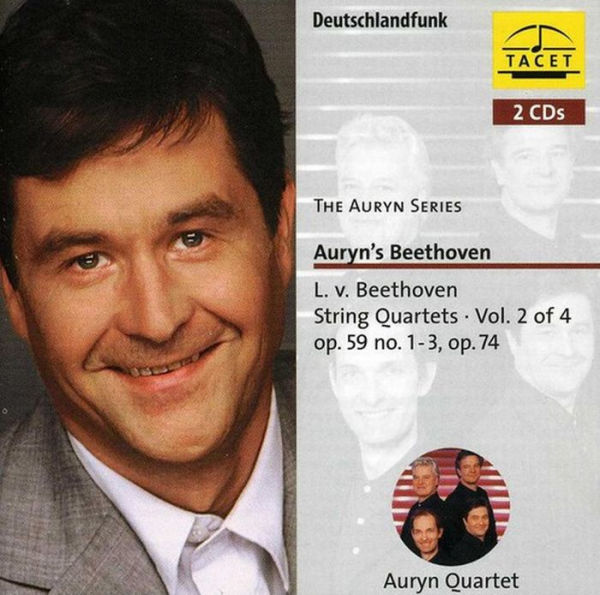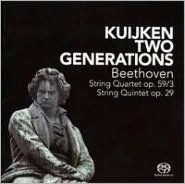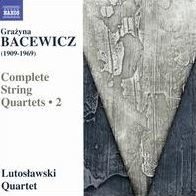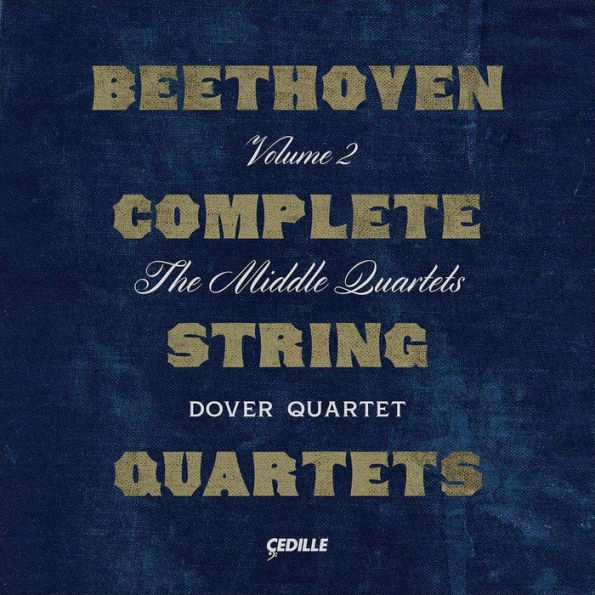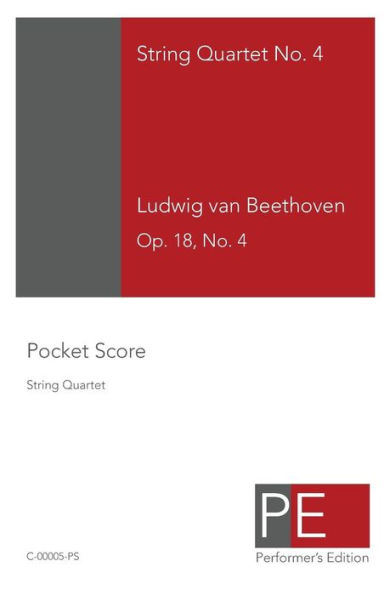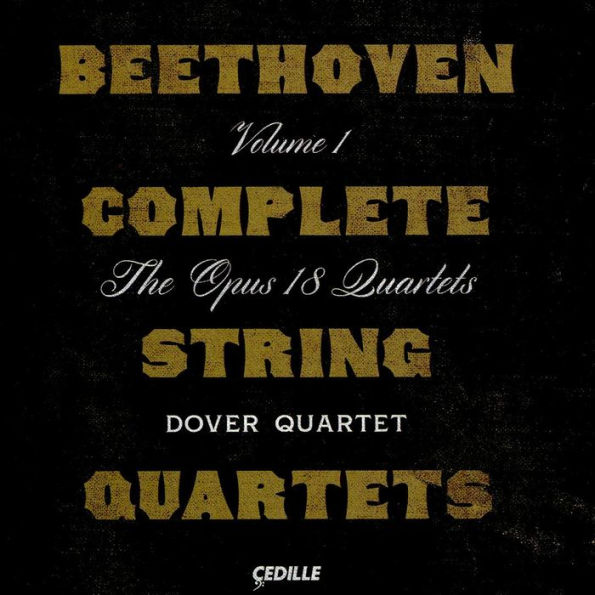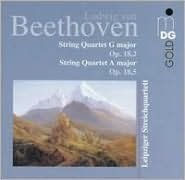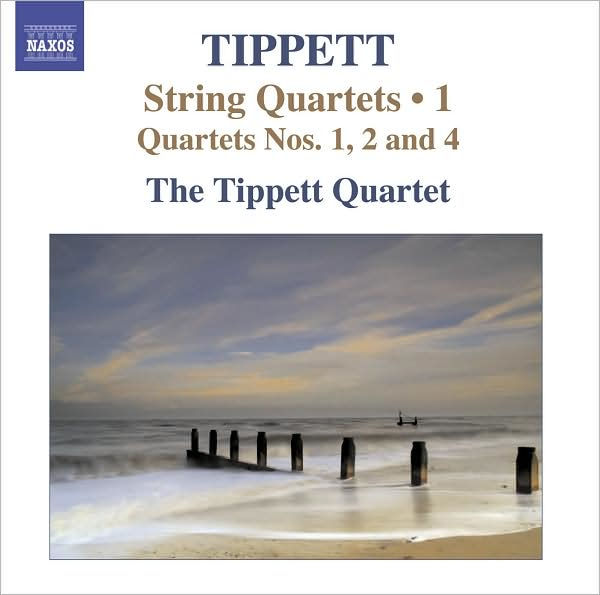Home
Beethoven: String Quartets, Vol. 2
Barnes and Noble
Loading Inventory...
Beethoven: String Quartets, Vol. 2
Current price: $22.99
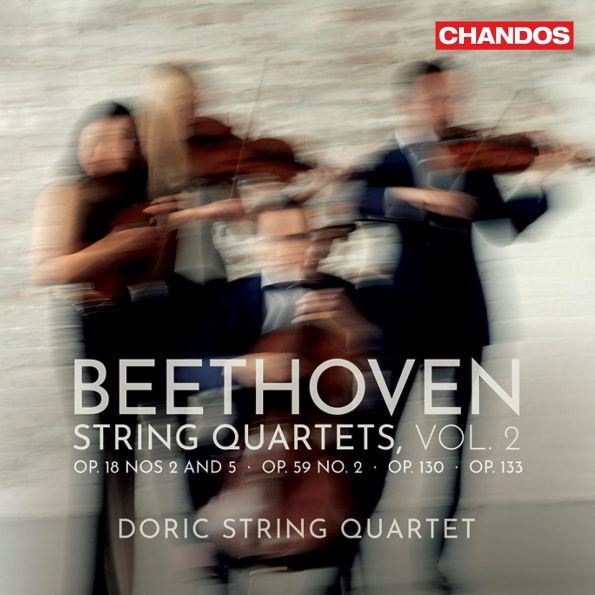
Barnes and Noble
Beethoven: String Quartets, Vol. 2
Current price: $22.99
Loading Inventory...
Size: OS
*Product information may vary - to confirm product availability, pricing, shipping and return information please contact Barnes and Noble
The world is full of
Beethoven
string quartet cycles, and the market is especially thick with them in the years running up to the bicentennial of
's death in 1826. Enter the young
Doric String Quartet
, who, whatever else one may think of their contribution, certainly passes the test of whether it has delivered something new in this well-worn repertory. The hallmark of the group's playing, almost throughout, is an extremely light touch. The players favor the device of entering a movement quietly, almost as if it is fading in. In the opening
String Quartet in G major, Op. 18, No. 2
, this has an entrancing effect. In both of the
Op. 18 quartets
included here (each of the volumes in the
Doric
's cycle includes early, middle, and late quartets), the group succeeds in bringing out a mood distinctively different from that of the
Haydn
-
Mozart
sphere most quartets stress. In the late
String Quartet No. 13 in B flat major, Op. 130
, the group is likewise utterly distinctive. The
plays both
's original
Grosse Fuge
finale and
's simpler substitute, and in the
, the players' delicate attacks lower the sense of struggle, of being at the limits of playability, that is usually heard in this work. It is remarkable to hear this piece without wondering if someone is going to break a string. The
's tempos are relatively quick throughout, and if this helps build up to the big
in
Op. 130
, it adds a possibly unwanted nervous quality to the danza tedesca movement. Here and elsewhere, the group's playing may be a matter of taste; that is how it is with bold readings. To these ears, the
String Quartet in E minor, Op. 59, No. 2
, works least well; this is bold, dramatic middle-period
that doesn't quite receive its proper weight. Here again, though, one's mileage (kilometrage?) may vary. This album certainly demands attention, and the recording by
Chandos
at Potton Hall is at the label's usual high level for chamber music. This release made classical best-seller lists in the autumn of 2024. ~ James Manheim
Beethoven
string quartet cycles, and the market is especially thick with them in the years running up to the bicentennial of
's death in 1826. Enter the young
Doric String Quartet
, who, whatever else one may think of their contribution, certainly passes the test of whether it has delivered something new in this well-worn repertory. The hallmark of the group's playing, almost throughout, is an extremely light touch. The players favor the device of entering a movement quietly, almost as if it is fading in. In the opening
String Quartet in G major, Op. 18, No. 2
, this has an entrancing effect. In both of the
Op. 18 quartets
included here (each of the volumes in the
Doric
's cycle includes early, middle, and late quartets), the group succeeds in bringing out a mood distinctively different from that of the
Haydn
-
Mozart
sphere most quartets stress. In the late
String Quartet No. 13 in B flat major, Op. 130
, the group is likewise utterly distinctive. The
plays both
's original
Grosse Fuge
finale and
's simpler substitute, and in the
, the players' delicate attacks lower the sense of struggle, of being at the limits of playability, that is usually heard in this work. It is remarkable to hear this piece without wondering if someone is going to break a string. The
's tempos are relatively quick throughout, and if this helps build up to the big
in
Op. 130
, it adds a possibly unwanted nervous quality to the danza tedesca movement. Here and elsewhere, the group's playing may be a matter of taste; that is how it is with bold readings. To these ears, the
String Quartet in E minor, Op. 59, No. 2
, works least well; this is bold, dramatic middle-period
that doesn't quite receive its proper weight. Here again, though, one's mileage (kilometrage?) may vary. This album certainly demands attention, and the recording by
Chandos
at Potton Hall is at the label's usual high level for chamber music. This release made classical best-seller lists in the autumn of 2024. ~ James Manheim
The world is full of
Beethoven
string quartet cycles, and the market is especially thick with them in the years running up to the bicentennial of
's death in 1826. Enter the young
Doric String Quartet
, who, whatever else one may think of their contribution, certainly passes the test of whether it has delivered something new in this well-worn repertory. The hallmark of the group's playing, almost throughout, is an extremely light touch. The players favor the device of entering a movement quietly, almost as if it is fading in. In the opening
String Quartet in G major, Op. 18, No. 2
, this has an entrancing effect. In both of the
Op. 18 quartets
included here (each of the volumes in the
Doric
's cycle includes early, middle, and late quartets), the group succeeds in bringing out a mood distinctively different from that of the
Haydn
-
Mozart
sphere most quartets stress. In the late
String Quartet No. 13 in B flat major, Op. 130
, the group is likewise utterly distinctive. The
plays both
's original
Grosse Fuge
finale and
's simpler substitute, and in the
, the players' delicate attacks lower the sense of struggle, of being at the limits of playability, that is usually heard in this work. It is remarkable to hear this piece without wondering if someone is going to break a string. The
's tempos are relatively quick throughout, and if this helps build up to the big
in
Op. 130
, it adds a possibly unwanted nervous quality to the danza tedesca movement. Here and elsewhere, the group's playing may be a matter of taste; that is how it is with bold readings. To these ears, the
String Quartet in E minor, Op. 59, No. 2
, works least well; this is bold, dramatic middle-period
that doesn't quite receive its proper weight. Here again, though, one's mileage (kilometrage?) may vary. This album certainly demands attention, and the recording by
Chandos
at Potton Hall is at the label's usual high level for chamber music. This release made classical best-seller lists in the autumn of 2024. ~ James Manheim
Beethoven
string quartet cycles, and the market is especially thick with them in the years running up to the bicentennial of
's death in 1826. Enter the young
Doric String Quartet
, who, whatever else one may think of their contribution, certainly passes the test of whether it has delivered something new in this well-worn repertory. The hallmark of the group's playing, almost throughout, is an extremely light touch. The players favor the device of entering a movement quietly, almost as if it is fading in. In the opening
String Quartet in G major, Op. 18, No. 2
, this has an entrancing effect. In both of the
Op. 18 quartets
included here (each of the volumes in the
Doric
's cycle includes early, middle, and late quartets), the group succeeds in bringing out a mood distinctively different from that of the
Haydn
-
Mozart
sphere most quartets stress. In the late
String Quartet No. 13 in B flat major, Op. 130
, the group is likewise utterly distinctive. The
plays both
's original
Grosse Fuge
finale and
's simpler substitute, and in the
, the players' delicate attacks lower the sense of struggle, of being at the limits of playability, that is usually heard in this work. It is remarkable to hear this piece without wondering if someone is going to break a string. The
's tempos are relatively quick throughout, and if this helps build up to the big
in
Op. 130
, it adds a possibly unwanted nervous quality to the danza tedesca movement. Here and elsewhere, the group's playing may be a matter of taste; that is how it is with bold readings. To these ears, the
String Quartet in E minor, Op. 59, No. 2
, works least well; this is bold, dramatic middle-period
that doesn't quite receive its proper weight. Here again, though, one's mileage (kilometrage?) may vary. This album certainly demands attention, and the recording by
Chandos
at Potton Hall is at the label's usual high level for chamber music. This release made classical best-seller lists in the autumn of 2024. ~ James Manheim
